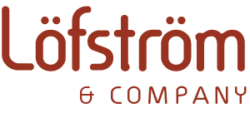 Do you want to be a successful business content marketer? The excitement and potential of creating content that builds your reputation as a thought leader often gets in the way of doing the simple stuff first. Like planning. Content editorial planning to be specific.
Do you want to be a successful business content marketer? The excitement and potential of creating content that builds your reputation as a thought leader often gets in the way of doing the simple stuff first. Like planning. Content editorial planning to be specific.
Unfortunately, you might start out with two or three great blog topic ideas, and then, you’re stuck. You got nothing. No new topic ideas, and your commitment to regular blog posts means there are deadlines. If you had only taken a bit of time up front to plan your content. Well, it’s not too late, and you’ll be glad you did.
As a professional service or small business person, you don’t want to spend loads of time planning. However, a little time and thoughtfulness can allow you to create a simple, actionable content plan. Let’s review the essential elements of a content marketing plan.
Business objectives
Business objectives are two-fold: financial and marketing. It’s the same for any business plan. Financial objectives include quantitative goals, like “achieve a 12% growth in revenues,” or “increase revenue by $100,000” or “gain 20 warm leads.” The time frame might be monthly, quarterly or annually, and the time frame must be included in order to measure results.
Marketing objectives help you achieve your financial objectives. They might include:
- Increase the company’s brand awareness (as evidenced by website traffic, interactions with prospects, friends of the firm, etc.).
- Develop and nurture a reputation as a thought leader.
- Increase loyalty among clients and referral partners.
- Produce great content that is useful and valued by prospects and clients.
Marketing objectives are not always quantifiable, but online tools, like Google tools, provide a lot of data that can help beyond just assuming you’re making progress.
Content conversion goals – getting prospects to take “next steps”
As a business owner, you understand inbound marketing is a process. People find you and perhaps identify themselves as a bona fide prospect. Actions they take on your website can be tracked. Perhaps, they email you or call you or read a blog post. These actions, or steps, are all part of the conversion process.
“Key performance indicators” (KPIs) can help you assess your progress in content marketing and conversions. KPIs are readily trackable. KPIs might include:
- Website visits
- Time spent on your site or particular pages
- Video views
- Gated and ungated content downloads (e-books, PDFs, etc.)
- Blog/email subscriptions
- Blog comments
- Webinar registrations/attendees
- Mobile device readership
My advice: keep it simple at first. Track a couple things that make the most sense. Add others as you gain a better understanding of your audience, their needs and preferences.
Understand your audience via “buyer personas”
A buyer persona is a thoughtful method of coming to grips with your ideal customers. According to Hubspot, a buyer persona is a “semi-fictional representation of your ideal customer based on market research and real data about your existing customers.”
The buyer persona identification process forces you to take a closer look into the needs, motivations, demographics, behavior patterns and goals of your customers and prospective customers. They are the people you want to educate, persuade and influence into being your customers. Your content should be designed to help them solve their problems or achieve their goals, and convince them that you might be just the one to help.
Topics and keywords
With some thought, you should come up with topics and categories of topics that are important to your buyer personas. You can also use keyword tools. Google has some simple and free keyword tools:
- Enter a word or specific word combinations that you think are relevant to your audience into the Google search window on your browser. The organic and paid search results may give you new wrinkles on the topics interesting to your audiences. Google immediately suggests similar words and phrases that might yield appropriate topics for you.
- Follow the same steps as above i.e,. conduct a normal search on relevant terms. This time go to the bottom of the screen and note the header, “Searches related to…” Those suggestions there for searchers are also ideas for you!
- Jump into google Adwords and its keyword tool if you’re a bit more sophisticated or just resolute. It’s also free to use, although it is part of their pay per click tool should you decide to go live. It will give you more keyword ideas when you enter a few. You can even submit your competitors’ website URLs to see what keywords Google offers as relevant for a given website.
The longer keywords, say two to four words, will help you think of topics. If you want more tools, well, just Google for “free keyword tools” or “paid keyword tools.”
Content types
The types of content for your website can vary widely. Following are some of the most common types of content.
Evergreen articles
The majority of your content should be evergreen, content that will have a long shelf life. Discuss the topics important to your audiences. Give them helpful, insightful information. Offering your own point of view can differentiate you from the competition.
Guides or “How-Tos”
Expert guidance, such as information on how to do “something” in which you are an expert, gives your audience valuable tips and guidance. It also gives them an insight to you as a provider of such services.
Curated content
Content curation is simply sharing content from other sources. When you come across an interesting blog post, website, video, etc., share it by adding a brief post on your blog and share it via your social media updates. Enhance the curated content by adding insightful comments or your own perspective.
Whitepapers
Whitepapers or point of view (POV) articles help inform your audience and also showcase your own knowledge and expertise. They usually are longer articles or publications with modest use of images and graphic design.
Case studies
Case studies can inform readers and offer an in-depth look at how your company helps clients. The classic formula is to present a business challenge, the solution and the benefits gained.
News jacking
Comment on trending topics and news stories. Demonstrate that you’re current with your industry or profession. David Meerman Scott’s book, “News Jacking,” describes news jacking as “a process by which you inject your ideas or angles into breaking news, in real-time, in order to generate media coverage for yourself or your business.”
eBooks
Ebooks are a long-form way to share your knowledge with others, to increase website or blog traffic and to promote your expertise in a given area. They can be self-published and distributed electronically.
Webinars
Record your webinars or live presentations and add to your content mix.
Videos
Videos can increase in your visitors’ understanding of your organization and products, thus increasing the chances of gaining new customers. Costs and production value can vary greatly, so it’s important to know what you want and how much you can spend.
Schedule your content posts – yes, you need a calendar
Content marketers are publishers, and publishers know they have to keep churning out the stories and information that people will consume. This can be a big adjustment for some. Your calendar, with schedules and deadlines, will help keep you on task. It will help you decide which topics are most important and when they should be publicized. Schedule your content items for 6 to 12 months into the future.
Distribute your posts
Your content is created for your website, that’s where it lives and where internet searchers can find it via Google, Yahoo or Bing. Your email tool (think Constant Contact or MailChimp) is an equally important way to distribute, or share, your content. Add links to your new web content on social media outlets: LinkedIn, Facebook, Twitter, etc. as appropriate. Pay per click (PPC) advertising can be another way to help internet searchers find you. Google AdWords is the most used PPC tool. Yahoo and Bing have PPC programs . The social media tools like Facebook LinkedIn and Twitter are adding and refining their own advertising tools.
Purposeful planning can increase your chances of content marketing success. By being organized and methodical, you can build your reputation as an expert in your field. Prospects will find your content, customers will gain new insights and you will be happy you invested time and energy into a comprehensive content marketing plan.

